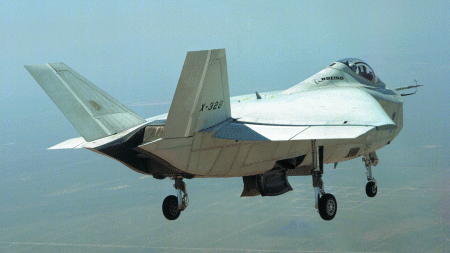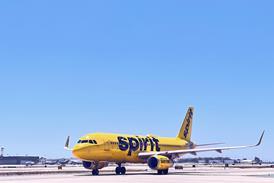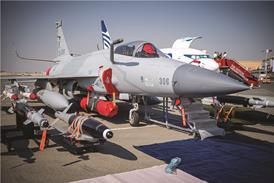Regional tensions and ageing aircraft are reviving sales
Guy Norris/LOS ANGELES
After more than a decade of retrenchment and consolidation in the military aircraft engine business, the latest indicators show signs of a slow revival. This is driven by two main forces: the start of large-scale equipment upgrade and replacement programmes as military aircraft near the end of their operational lives; and increasing regional tensions, particularly in areas of Asia and the Middle East.
Engine makers support powerplants for a staggering 90,000 military aircraft in operation worldwide. Upgrade work for some of these, added to 1999's turnaround orderbook of 1,100 new military aircraft, has boosted hopes of a revival. This follows years of steadily declining defence spending which has seen spending drop by more than 35% between 1985 and 1999. Several large new contracts in 2000 - such as the United Arab Emirates (UAE) Lockheed Martin F-16 Block 60 order and the Egyptian Hongdu/Pakistan Aeronautical Complex K-8 deal - show this might not simply be a flash in the pan. This year Chile has selected General Electric's F110 to power 12 new F-16s, while Italy chose Pratt & Whitney's F100 for 34 leased F-16s selected as its interim fighter until the Eurofighter's arrival.
New business expected in 2001 includes the hotly contested, but delayed, $3.2 billion South Korean F-X order for 40 aircraft, a Polish competition for up to 60 fighters and an Austrian requirement for 30 aircraft to replace ageing Saab Drakens. Hoping for a share of the business are Eurojet (EJ200), General Electric (F110, F404), Pratt & Whitney (F100), Snecma (M53) and Lyulka Saturn (AL-31F).

Sensing growing uncertainty over the future of the Joint Strike Fighter (JSF), GE is also pushing on with plans for a potential F110-129 mid life upgrade. Aimed at USAF F-16s from 2006 onwards, it would build on elements of the -132 version in development for the UAE, the F404/414 and the F118 programmes to provide a greatly increased life of 30,000 cycles. P&W, which is in pole position on the JSF, is meanwhile supporting flight tests of the F119-powered Lockheed Martin/Boeing F-22 as well as the JSF119-614 powered X-32B and the upcoming JSF119-611 powered X-35B. It also plans to protect its F100 base by updating its best selling F-15/F-16 engine with relevant technology, such as three-dimensional blade design and scaled versions of the F119-100 fan. The revised fan-equipped F100-232, for example, is expected to continue development tests in Florida later this year.
Military engine makers within the CIS meanwhile continue to battle with falling domestic military spending and a reputation overseas for poor support that continues to hamper export sales. Unlike the strongly supported Chinese military engine makers, currently working on new developments of the Wopen WP15 for the "XXJ" advanced fighter, and the WP14 for a new multirole variant of the Shenyang J-8II, CIS counterparts are scratching for funding. Lyulka Saturn's continuing AL-31FN sales to the Chinese for the Chengdu J-10 provide a valuable income, while licensing deals with India over the FP version engine provide more.
Klimov's new generation of turboshaft engines provides the company with more than a glimmer of hope for brighter things to come in both the domestic and export markets. The VK-1500, VK-2500, VK-3000 and VK-3500 are expected to prove tough competition to western engine makers, particularly in emerging markets in Latin America and Asia. Helicopters have accounted for almost 40% of new military aircraft orders in the past two years, and the market is expected to show sustained growth over the next decade. According to Rolls-Royce's latest helicopter forecast, the military market is expected to show a demand for 3,235 new machines by 2010, representing 5% growth. Much of this will be due to fleet replacement programmes, as well as the advent of long-awaited new helicopters including the Eurocopter Tiger, NH Industries NH90 and the Boeing/Sikorsky RAH-66 Comanche.
Rolls-Royce also foresees a demand for almost 1,400 engine upgrades over the next decade for types including the Boeing CH-47F, Agusta Sikorsky UH-60M/X, CH-53X and the UK's Westland Lynx. Regional demand is expected to be led by North America (34.6%), Europe (27%) and North Asia (16.8%), with the balance accounted for by the Middle East and India (11.8%), South Asia, Africa, Australia and South America.
One of the biggest unknowns in the military turboshaft world, and one which should be resolved by mid-year, is the fallout from the proposed GE-Honeywell merger. A likely casualty is the GE-P&W Common Engine Programme teaming for future US Army helicopter power needs, while the establishment of a new, standalone helicopter engine company is considered highly probable.
| INSTALLED INTERNATIONAL BASE F100/F110 (EXCLUDING USA) | |||
| F100 | F110 | ||
| Belgium | 90 | Bahrain | 24 |
| Denmark | 63 | Chile | 12 |
| Egypt | 75 | Egypt | 129 |
| Indonesia | 10 | Greece | 91 |
| Israel | 301 | Israel | 168 |
| Japan | 400 | Japan | 56 |
| Jordan | 16 | Turkey | 274 |
| Korea | 155 | UAE | 88 |
| Netherlands | 138 | ||
| Norway | 58 | ||
| Pakistan | 32 | ||
| Portugal | 20 | ||
| Saudi Arabia | 324 | ||
| Singapore | 41 | ||
| Taiwan | 149 | ||
| Thailand | 34 | ||
| Venezuela | 22 | ||
| *P&W list includes active installed engines and does not include spares, attritions or retirements. GE list includes on order or in-service engines. | |||
Source: Flight International























